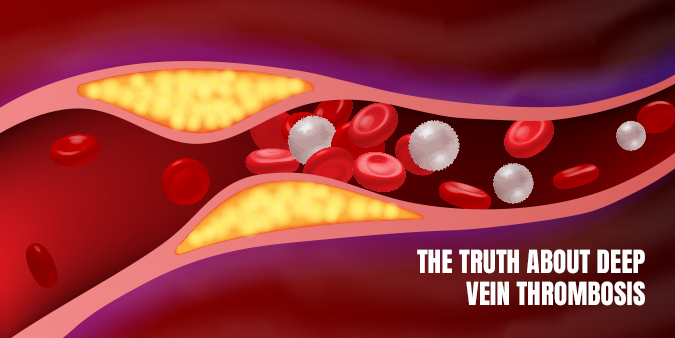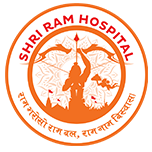
The Truth About Deep Vein Thrombosis: Causes, Symptoms, and Prevention Tips
Thursday, 30th May 2024Deep Vein Thrombosis (DVT) is a serious condition that occurs when a blood clot forms in a deep vein, typically in the legs. If left untreated, it can lead to severe complications, including pulmonary embolism. Understanding the causes, recognizing the symptoms, and knowing how to prevent DVT are crucial for maintaining good health. This article explores the key aspects of DVT to help you stay informed and proactive about your health.
What is Deep Vein Thrombosis (DVT)?
Deep Vein Thrombosis (DVT) is the formation of a blood clot (thrombus) in a deep vein, usually in the legs. These clots can partially or completely block blood flow, leading to swelling, pain, and other symptoms. If a part of the clot breaks off, it can travel to the lungs, causing a potentially life-threatening condition called a pulmonary embolism.
Causes of DVT
Prolonged Immobility
Prolonged immobility is a significant risk factor for DVT. This can occur during long periods of sitting or lying down, such as during extended travel, bed rest, or recovery from surgery.
Injury or Surgery
Injury or surgery can damage blood vessels, increasing the risk of clot formation. Surgical procedures, especially those involving the legs or hips, can also contribute to the development of DVT.
Medical Conditions
Certain medical conditions can increase the risk of DVT, including:
- Cancer: Some cancers and cancer treatments can increase the risk of blood clots.
- Heart failure: Reduced heart function can slow blood flow, increasing the risk of clot formation.
- Inflammatory bowel disease: Conditions such as Crohn's disease and ulcerative colitis can increase DVT risk.
Hormonal Factors
Hormonal factors can play a role in DVT development. These include:
- Pregnancy: Increased blood volume and hormonal changes during pregnancy can increase the risk of DVT.
- Birth control pills or hormone replacement therapy: These medications can increase the risk of blood clots.
Genetic Factors
A family history of DVT or inherited blood clotting disorders can increase your risk. Conditions such as factor V Leiden mutation can make you more prone to developing blood clots.
Lifestyle Factors
Certain lifestyle factors can contribute to DVT, including:
- Smoking: Smoking affects blood clotting and circulation, increasing the risk of DVT.
- Obesity: Excess weight increases pressure on the veins in the legs, raising the risk of clot formation.
- Sedentary lifestyle: Lack of physical activity can slow blood flow and increase the risk of clots.
Symptoms of DVT
DVT can present with various symptoms, or sometimes none at all. Common symptoms include:
Swelling
Swelling in the affected leg, typically in the calf, is a common symptom. The swelling may occur suddenly and may not be accompanied by pain.
Pain
Pain or tenderness in the leg, often starting in the calf, is another common symptom. The pain may feel like cramping or soreness and may worsen when standing or walking.
Red or Discolored Skin
The skin over the affected area may become red or discolored. This discoloration can range from redness to a bluish hue.
Warmth
The affected area may feel warm to the touch compared to the surrounding skin.
Vein Prominence
Vein prominence or visible veins may become more noticeable on the surface of the skin.
Prevention Tips for DVT
Stay Active
Staying active is crucial for preventing DVT. Regular physical activity helps maintain healthy blood flow and prevents clot formation. Aim for at least 30 minutes of moderate exercise most days of the week.
Avoid Prolonged Sitting or Standing
If you must sit or stand for long periods, take breaks to move around. Stretch your legs and walk around every hour to keep blood flowing.
Wear Compression Stockings
Compression stockings can help improve blood flow in the legs and reduce the risk of DVT. They apply gentle pressure to the legs, promoting circulation.
Stay Hydrated
Staying hydrated is essential for maintaining good blood flow. Drink plenty of water throughout the day to keep your blood thin and prevent clotting.
Maintain a Healthy Weight
Maintaining a healthy weight can reduce the pressure on your veins and lower your risk of DVT. A balanced diet and regular exercise can help achieve and maintain a healthy weight.
Avoid Smoking
Avoid smoking to improve overall vascular health. Smoking affects blood clotting and circulation, increasing the risk of DVT.
Manage Medical Conditions
If you have medical conditions that increase your risk of DVT, work with your healthcare provider to manage them effectively. Follow your doctor’s recommendations and take prescribed medications as directed.
Use Medications as Prescribed
If you are at high risk for DVT, your doctor may prescribe anticoagulant medications to prevent clot formation. Take these medications exactly as prescribed.
Conclusion
Deep Vein Thrombosis (DVT) is a serious condition that requires awareness and proactive management. Understanding the causes, recognizing the symptoms, and implementing prevention strategies can significantly reduce your risk. By staying active, maintaining a healthy weight, avoiding prolonged immobility, and following your healthcare provider's advice, you can help prevent DVT and maintain good vascular health. If you experience symptoms of DVT, seek medical attention promptly to prevent complications and ensure effective treatment.


